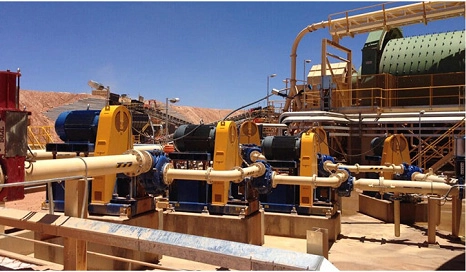
-
 Afrikaans
Afrikaans -
 Albanian
Albanian -
 Amharic
Amharic -
 Arabic
Arabic -
 Armenian
Armenian -
 Azerbaijani
Azerbaijani -
 Basque
Basque -
 Belarusian
Belarusian -
 Bengali
Bengali -
 Bosnian
Bosnian -
 Bulgarian
Bulgarian -
 Catalan
Catalan -
 Cebuano
Cebuano -
 Corsican
Corsican -
 Croatian
Croatian -
 Czech
Czech -
 Danish
Danish -
 Dutch
Dutch -
 English
English -
 Esperanto
Esperanto -
 Estonian
Estonian -
 Finnish
Finnish -
 French
French -
 Frisian
Frisian -
 Galician
Galician -
 Georgian
Georgian -
 German
German -
 Greek
Greek -
 Gujarati
Gujarati -
 Haitian Creole
Haitian Creole -
 hausa
hausa -
 hawaiian
hawaiian -
 Hebrew
Hebrew -
 Hindi
Hindi -
 Miao
Miao -
 Hungarian
Hungarian -
 Icelandic
Icelandic -
 igbo
igbo -
 Indonesian
Indonesian -
 irish
irish -
 Italian
Italian -
 Japanese
Japanese -
 Javanese
Javanese -
 Kannada
Kannada -
 kazakh
kazakh -
 Khmer
Khmer -
 Rwandese
Rwandese -
 Korean
Korean -
 Kurdish
Kurdish -
 Kyrgyz
Kyrgyz -
 Lao
Lao -
 Latin
Latin -
 Latvian
Latvian -
 Lithuanian
Lithuanian -
 Luxembourgish
Luxembourgish -
 Macedonian
Macedonian -
 Malgashi
Malgashi -
 Malay
Malay -
 Malayalam
Malayalam -
 Maltese
Maltese -
 Maori
Maori -
 Marathi
Marathi -
 Mongolian
Mongolian -
 Myanmar
Myanmar -
 Nepali
Nepali -
 Norwegian
Norwegian -
 Norwegian
Norwegian -
 Occitan
Occitan -
 Pashto
Pashto -
 Persian
Persian -
 Polish
Polish -
 Portuguese
Portuguese -
 Punjabi
Punjabi -
 Romanian
Romanian -
 Russian
Russian -
 Samoan
Samoan -
 Scottish Gaelic
Scottish Gaelic -
 Serbian
Serbian -
 Sesotho
Sesotho -
 Shona
Shona -
 Sindhi
Sindhi -
 Sinhala
Sinhala -
 Slovak
Slovak -
 Slovenian
Slovenian -
 Somali
Somali -
 Spanish
Spanish -
 Sundanese
Sundanese -
 Swahili
Swahili -
 Swedish
Swedish -
 Tagalog
Tagalog -
 Tajik
Tajik -
 Tamil
Tamil -
 Tatar
Tatar -
 Telugu
Telugu -
 Thai
Thai -
 Turkish
Turkish -
 Turkmen
Turkmen -
 Ukrainian
Ukrainian -
 Urdu
Urdu -
 Uighur
Uighur -
 Uzbek
Uzbek -
 Vietnamese
Vietnamese -
 Welsh
Welsh -
 Bantu
Bantu -
 Yiddish
Yiddish -
 Yoruba
Yoruba -
 Zulu
Zulu


Nov . 05, 2024 04:28 Back to list
conduit cord grip
Understanding Conduit Cord Grips A Comprehensive Overview
In the realm of electrical installations and cable management, conduit cord grips play a pivotal role in ensuring safety and efficiency. These components are essential for securing various types of cables and providing protection against environmental factors, thereby enhancing the longevity of electrical systems.
A conduit cord grip is essentially a mechanical device that clamps onto electrical cords or cables. It's designed to hold the cable securely while allowing for the necessary movement and flexibility required in many applications. The primary function of a cord grip is to prevent strain on the cable connections, which can lead to damage over time. This is particularly crucial in scenarios where cables are frequently in motion or subject to tension.
One of the standout features of conduit cord grips is their versatility. They come in various shapes, sizes, and materials, which means they can be utilized in a wide range of environments. Whether in industrial settings, construction sites, or residential applications, there is a suitable cord grip available. Common materials used in manufacturing these grips include nylon, metal, and rubber, each offering unique benefits. For instance, nylon cord grips are lightweight and resistant to corrosion, making them ideal for outdoor use, while metal options provide enhanced durability in heavy-duty applications.
conduit cord grip

In addition to their primary function of securing cables, conduit cord grips also contribute to safety. They can help prevent electrical hazards by keeping cables contained and protected from external elements such as moisture, dust, and extreme temperatures. This is particularly important in industrial settings where harsh conditions can jeopardize the integrity of electrical systems. By ensuring that cables are well-protected, cord grips indirectly support compliance with safety regulations and standards.
Installation of conduit cord grips is typically straightforward, making them an attractive option for both professional electricians and DIY enthusiasts. Most grips feature a screw or clamp mechanism that allows for easy attachment to conduit or electrical boxes. Furthermore, they often come with strain relief features, which serve to absorb movement and vibrations, further safeguarding the cable connections.
Choosing the right conduit cord grip is crucial. Factors to consider include the type of cable being used, the environmental conditions, and the specific application requirements. It is advisable to consult industry standards and guidelines to ensure that the selected grip meets all necessary safety and performance criteria.
In conclusion, conduit cord grips are an indispensable component in electrical installations. Their ability to secure and protect cables while ensuring flexibility and safety makes them a vital asset across various industries. As technology advances and new materials are developed, the options for conduit cord grips continue to expand, promising even greater performance and reliability in electrical applications. Understanding the significance of these components not only aids in effective cable management but also enhances overall operational safety.
Latest news
Your Best Choice for Duct Rodder and Fish Tape Wire Puller Tools
NewsAug.13,2025
Unlocking Efficiency and Precision with Premium Cable Tools and Equipment
NewsAug.13,2025
Smart Solutions with Precision: Cable Pulling Tools That Deliver
NewsAug.13,2025
Reliable Protection with Advanced Hot Stick Technology
NewsAug.13,2025
Reliable Cable Installation Tools at Your Fingertips
NewsAug.13,2025
Optimized Cable Laying with Heavy-Duty Solutions for Modern Projects
NewsAug.13,2025











